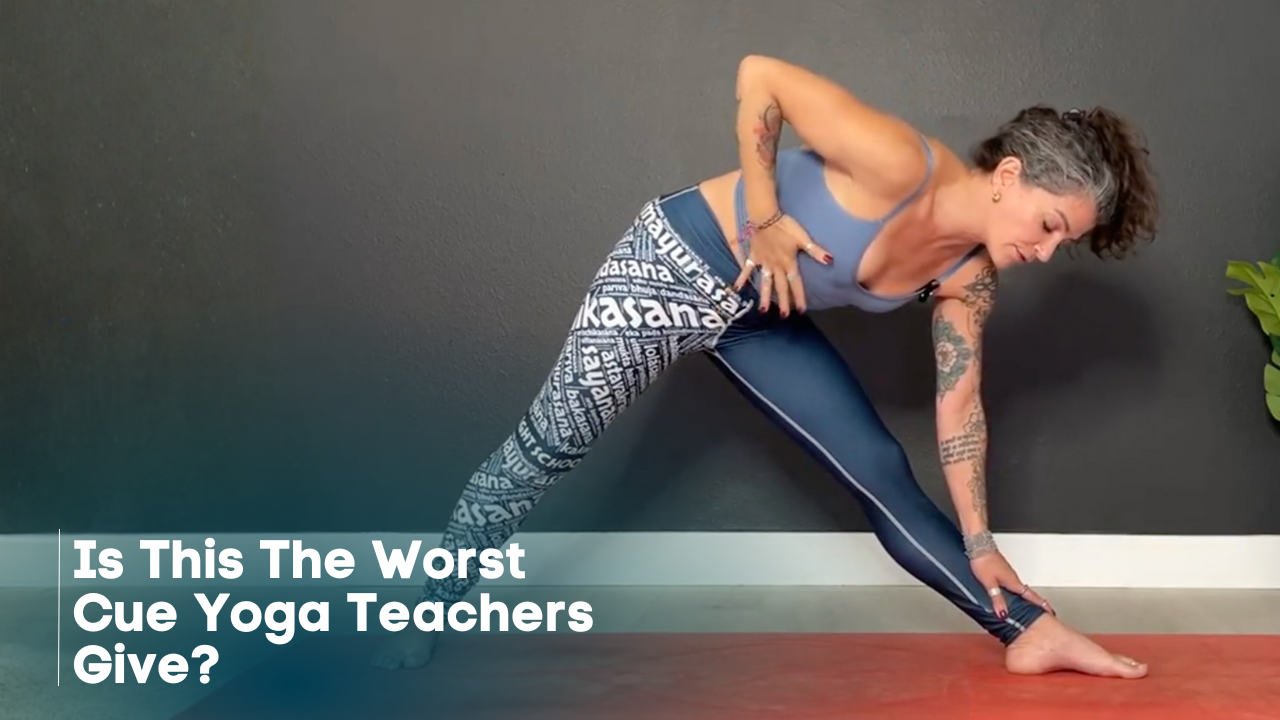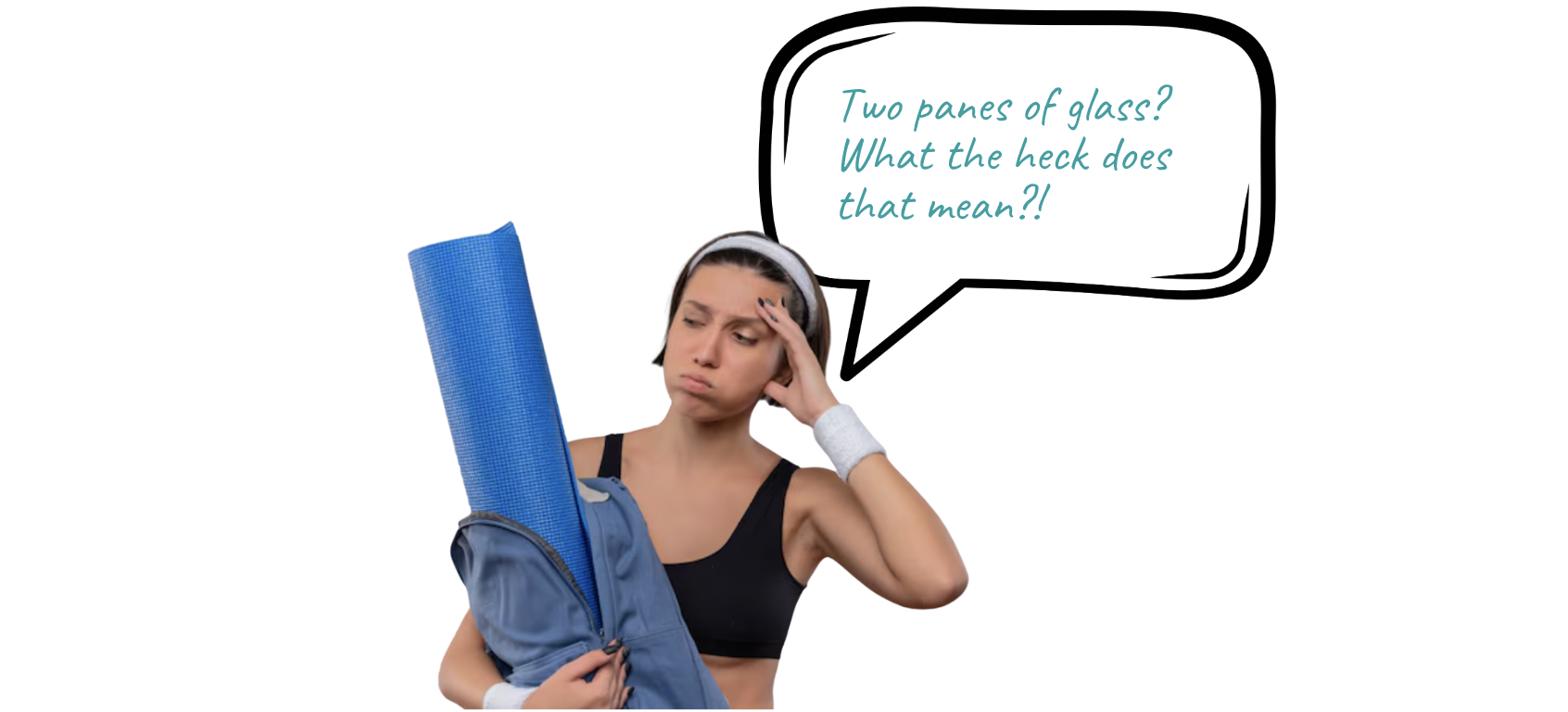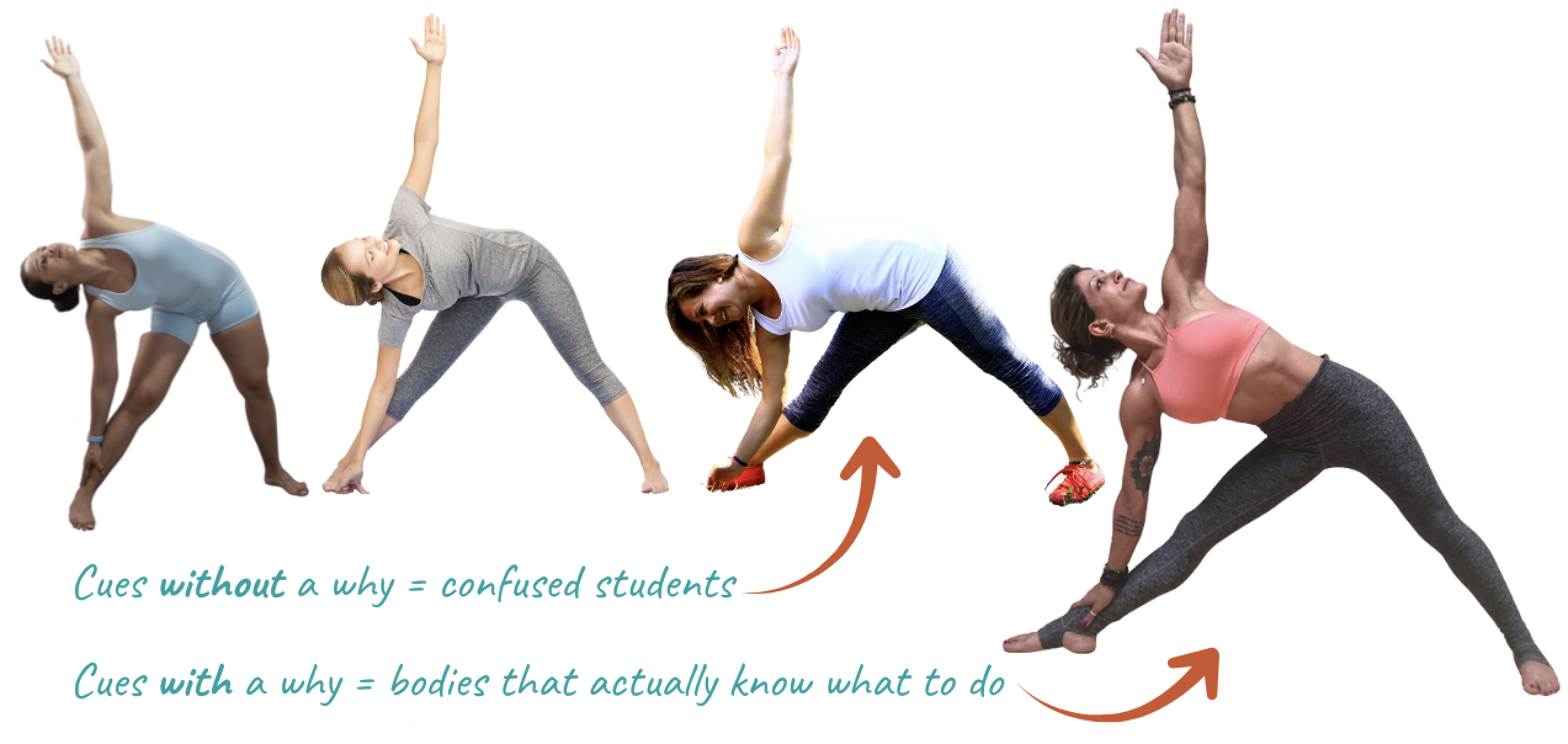Is This The Worst Cue Yoga Teachers Give?

One of the least effective cues I’ve ever heard in a yoga class is for Triangle Pose (Trikonasana): “Imagine your body is stuck between two panes of glass.”
You’ve probably heard it in class. The intention is good, it’s meant to help you open through the chest, stack the torso over the front leg, and prevent you from collapsing forward.
But let's think about it . . . unless you're Bruce Willis in Die Hard, when has your body ever actually been stuck between two panes of glass?
It’s not an image most of us can relate to. And if your students can’t connect with a cue, it stops being useful.
This isn’t just about Triangle Pose. It’s a perfect example of a bigger issue in yoga teaching: giving cues without a clear why.
In this article, I’m unpacking why abstract or overused cues can actually confuse your body, how to give cues with a clear why, and why understanding the mechanics behind a pose (like Triangle) makes all the difference.
Why Every Cue Needs a “Why”
Here’s the truth: many yoga teachers repeat cues simply because they learned them in training, because they sound “yoga-y,” because they worked for their own bodies, or because they make the teacher sound knowledgeable.
The problem? Most don’t pause to ask, “Why am I giving this cue?” "Does it make sense anatomically? Energetically? Will it actually help my students feel and understand the pose, or am I just repeating something I heard once and thought sounded cool?"
When cues are given without a why, students get confused.
They might try to follow the words exactly, even if it doesn’t fit their body. What should feel like an opening, strengthening pose instead becomes awkward, tense, or even frustrating.
This isn’t just about Triangle Pose. Think about any cue that tells you to “open your heart” or “breathe through your sit bones” without a clear explanation. Sure, it sounds poetic and even inspiring. But without guidance, it doesn’t automatically translate into safe, effective movement - and students often end up unsure what their body is actually supposed to do.
When cues are repeated without context or a real understanding of the mechanics behind them, students’ bodies go through the motions without ever learning how to move intelligently.
A Better Approach: Cues that Actually Connect
So how should we, as yoga teachers, do it differently? The secret is simple: have a why behind every cue you give.
Every cue should guide the student toward a specific, achievable outcome in the body.
Take our infamous “two panes of glass” cue for Triangle Pose. Most students have no idea how to translate that image into real movement. A stronger, more relatable and body-focused cue would focus on what’s actually happening in the student's bodies:
- Encourage students to stack their torso over the front leg, creating length from hip to shoulder.
- Invite them to rotate the ribs outward from the core, not by forcing the top hip open.
- Remind them to engage the legs and press through the feet to support the pose.
When cues are grounded in anatomy and movement mechanics rather than abstract imagery, students can actually feel the pose.
They learn how to engage the right muscles, create stability in the legs, and rotate through the torso safely, all while understanding why each instruction matters.
The same principle applies to every pose. A good cue gives your students something they can do, not just something they can imagine.
Teaching (and Practicing) with Intent
Whether you’re leading a class or practicing on your own, every cue should have a clear purpose. When you know why you’re giving an instruction, it’s easier to adjust it for your body or your students’ bodies, ensure safety, and help the pose actually work.
In Triangle Pose, for example, the goal isn’t to wedge yourself between imaginary panes of glass, it’s to create length, stability, and rotation in the torso while engaging the legs. When your cues focus on these outcomes, students can feel what the pose is doing in their body, engage the right muscles, and move with awareness instead of guessing.
The takeaway? Stop giving cues because they sound “yoga-y” or you heard them in training. Give cues that have a why, that guide the body intentionally, and that teach students how to move intelligently. That’s when poses stop being abstract instructions and start becoming meaningful, strengthening experiences.
Want to See All of This in Action?
Check out my YouTube video where I break all of this (and more) down!
PS. If you love this kind of clear, no-nonsense breakdown of cues, check out my No BS Yoga Pose Library. Inside, you’ll find 90+ yoga poses with step-by-step video tutorials and cues that make sense!
Grab my No Bullsh*t Yoga Pose library here!

